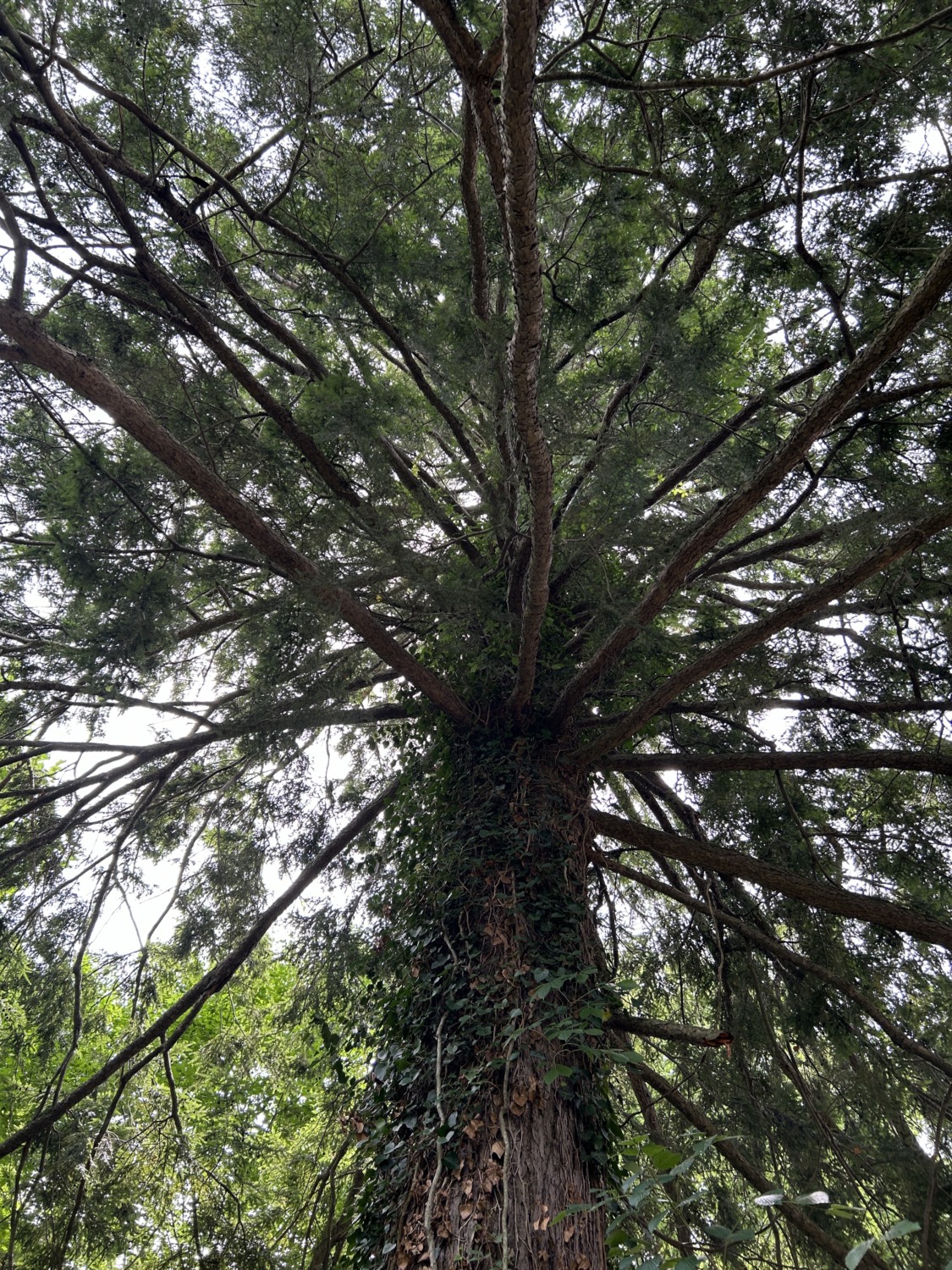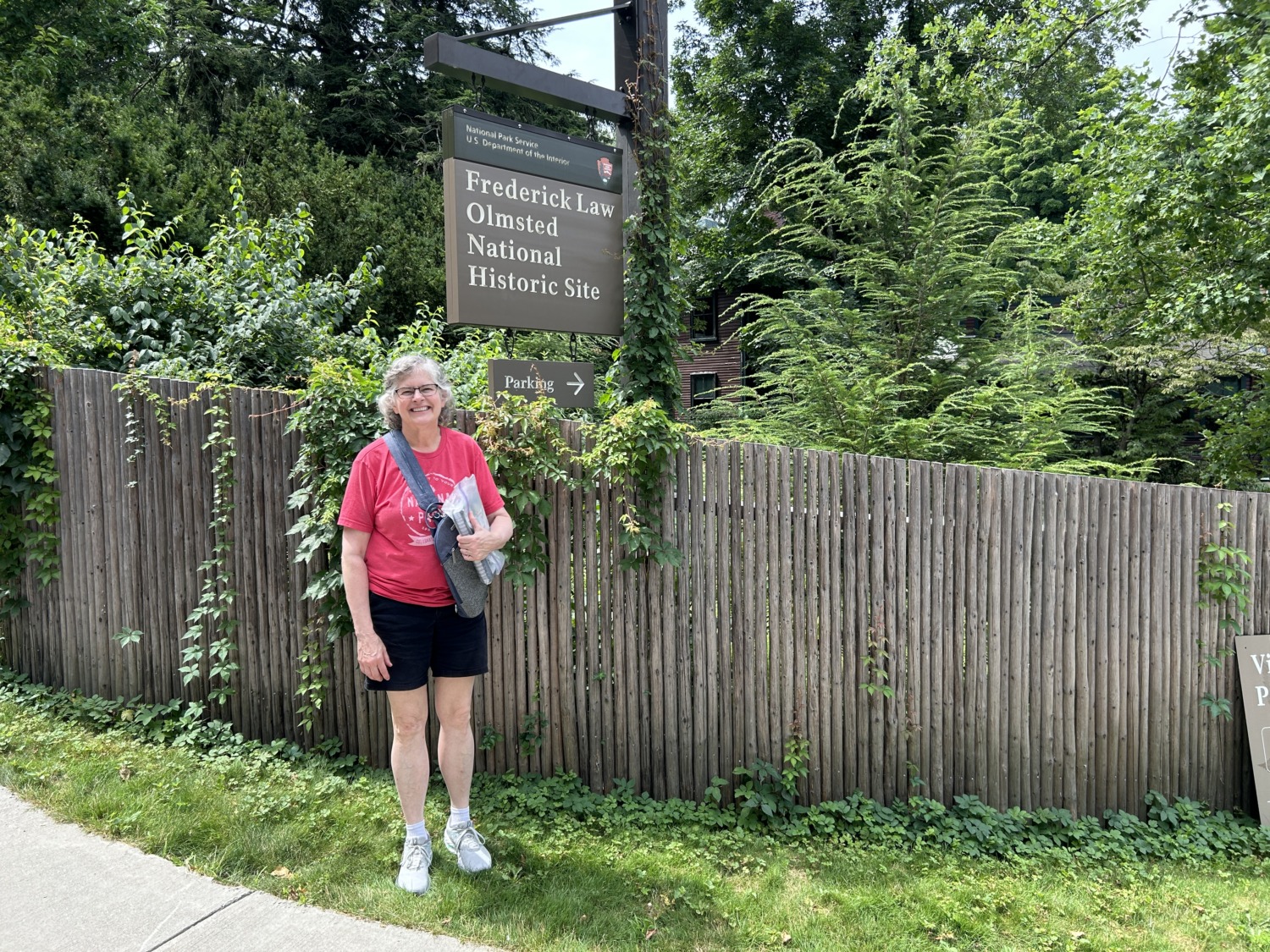We didn’t have to travel far for the fourth stamp of the day. Frederick Law Olmsted National Historic Site is less than ten minutes from the JFK House. Tom and I thought the name, Frederick Law Olmsted, sounded familiar, but we couldn’t figure out why. By visiting his house, Fairsted, we soon learned.
Frederick Law Olmsted was the person who invented the term “landscape architect.” He was the first, and some would say, the greatest landscape architect. Frederick was born in 1822 in Connecticut and lived most of his life in and around New York City. He is most famous for designing, with his partner Calvert Vaux, Central Park. But go to any park in the east and you are likely to see a park either designed by Olmsted or influenced by him.
Frederick Law Olmsted National Historic Site preserves his last home, and the site of his landscape architectural school, Fairsted. Although the area around Fairsted was well populated, Olmstead used the grounds as a living laboratory for his students. All his landscape design principles are present on the grounds, although on a small scale.
Tom and I started our visit by watching the movie in the Visitors Center, which described Olmstead’s life and designs. In addition to being a landscape architect, Olmsted worked as a journalist and headed the US Sanitary Commission during the Civil War. He worked for a couple of years as the manager of a mine in Mariposa, California. Because of that work, he became an ardent conservationist. Where nature’s beauty predominated, Olmstead believed it should be left alone to thrive. Unfortunately, Olmsted developed dementia later in his life. He moved to a care center, The McLean Hospital, where he died in 1903.
After Tom and I saw the movie, we walked through the museum/library/archive. The Frederick Law Olmsted National Historic Site houses 66,000 photographs of his work and the work done by his sons after his retirement. In addition, there are 140,000 plans and drawings done by or influenced by Olmsted.
When a ranger started a tour about Frederick Law Olmsted’s landscape architectural principles, Tom and I joined eagerly. The ranger walked us around the grounds and used them to point out the things that were most important to Olmsted in natural landscapes. First, he believed in the long game. Olmsted did not get to see mature designs. He planted saplings and knew how they would grow into the landscape.

Second, Frederick Law Olmsted believed that any design should enhance and disappear into the natural features of an area. He wanted his designs to promote relaxation and give people an escape from urban life. Olmsted played with light and shadow and created paths that invited people to wander. The ranger showed us the National Park’s shortest hiking trail – only about 50 feet. But it wandered and invited us in to the landscape.
The landscaping at Fairsted included a sunken area where Olmsted’s students could experiment with different plants. Paths could be visible, roads should not. There are no straight lines in Olmsted’s designs. Instead, his landscapes curve around and invite people to explore further.
The tour was short, but very good. I asked the ranger if she had an interest in landscape architecture before she started at Frederick Law Olmsted National Historic Site. She said no. In fact, she had grown up in Brookline and never visited the site until she got hired. But the more she learned about Olmsted, the more she admired what he did.
After our tour, I got my fourth stamp of the day and Tom and I headed out to the next site. National Park Sites are so diverse and interesting. We never know what we are going to learn when we visit. The Olmsted site was fascinating.



